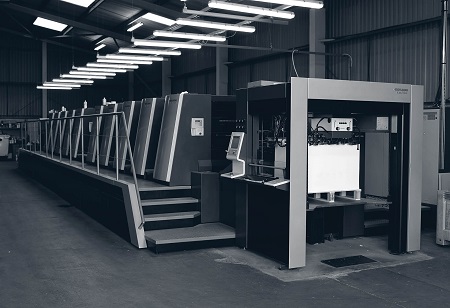Automation and technological breakthroughs have made a significant impact on the workplace environment today and the print industry is not left behind.
Organizations, particularly in the manufacturing sector, are now shifting on the bandwagon by building a workflow that falls in line with the future of printing.
The
printing machinery, market is anticipated to reach USD 25.7 billion by 2026. In the past decade, although there has been a huge shift in the demand from traditional printing to variable data printing & personalized printing,
digital printing is economical when compared to conventional printing technologies. Therefore, firms can now print smaller qualities of packaging with variable information and this allows them the possibility of innovative approach to
packaging solutions.The Variable data printing has evolved as a marketing communication tool which lets organizations to personalize packaging information in order to either target a particular group of audience or even an individual.
While technology is replacing several old techniques of operation & project management at a larger scale, print & design are the 2 instances of industries that are undergoing transitions & developments. In order to stay competitive & productive, both large as well as small print businesses have to educate themselves on the latest technological advances, specifically in software & machine aspects.
IWS, 3D Printing & Internet of Things
One of the prominent moves occurring in the printing industry is the Intelligent Workplace Services adoption & this transformation is set to decrease the complications of on-premise printing management as all the print jobs are submitted to a virtual print server & make sure there is elimination of on-premises servers which are
reducing the maintenance efficiency.
Arizona Flow technology is one of the new approaches for holding work on flatbed printing devices even without the need for any vacuum force as well as associated masking. Achieving adequate vacuum has meant that users should either turn off or mask the vacuum areas which are not in use, and stopping air leakage. This makes handling unusually sized as well as shaped media or numerous boards difficult, laborious as well as error prone and Arizona Flow technology transforms the paradigm by letting the system to leak with no negative implications.
Canon's inventive approach optimizes the way in which not just the airflow but also the pressure differential exert forces on adjacent surfaces, and this is the same principle that is leveraged in air flight. However, instead of depending on vacuum, it is mostly based on high velocity airflow. The clever technology used by Canon not only saves preparation time but it also increases application versatility.
Professional sign makers & printers
The CWT 1737 Evolution Max - a lamination device which is used for professional sign makers & printers, is an innovative package that features electronic pressure control, electric guide beam horizontal movement, as well as a heat-assist lamination roller helps in getting more precise settings as well as faster mounting & lamination without silvering.
Capturing significant market share by leveraging rapid prototyping
A design that saves about 6 feet of space when compared to conventional roll laminators, the board to be laminated is positioned on top of the LED glass top table as well as the roller gantry moves over it, Complete automation decreases the labor requirement to a single operator and the electric lift feature lets the height of the table to be adjusted for the height of the operator & it holds an impressive level of automation coupled with the associated boost in productivity.
Although the Indian manufacturing sector is adopting 3D printing technology at an early stage with an aim to capture a significant market share by using rapid prototyping, a significant benefit is that one can postpone the physical manufacturing & costs that are associated with it.Since the Internet of Things technology possesses the power to make gaping changes to the print industry, it is rapidly adapting to the immense spread of mobile devices & their numerous platforms of connectivity.
The road ahead
By adding the sensors that are accessible by the Internet of Things as well as networking technologies to printer hardware which uses the cloud connectivity & improved document processing capabilities & intelligence, businesses can obtain valuable real-time insight into print usage.Furthermore, with a complete suite of end-to-end solutions that are available for the end-to-end value chain, manufacturing firms can optimize their operations & enhance productivity at a significant rate.
